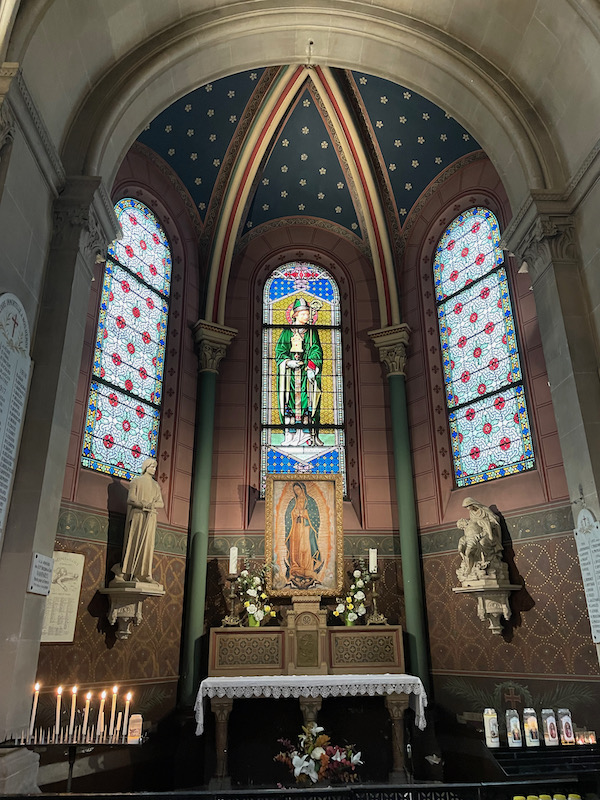Our Blog - Paris Olympics - Day 3
After a morning of Badminton on the north side of Paris, we walked to the Bassin de la Villette and spent a bit of time in a fan zone there. It is the largest artificial body of water in Paris, built in 1808. Its first function was as a reserve of drinking water but it also provided water needed for navigation on 2 of the canals in Paris. Originally surrounded by gardens where Parisians came to walk, the gardens were replaced by depots for manufactured goods during the industrial era. An interesting note on the drinking water ... when the great cholera epidemic hit Paris in 1832, Parisians who got their water from the Bassin de la Villette were less affected than those getting water from pumps that drew the water from the Seine.
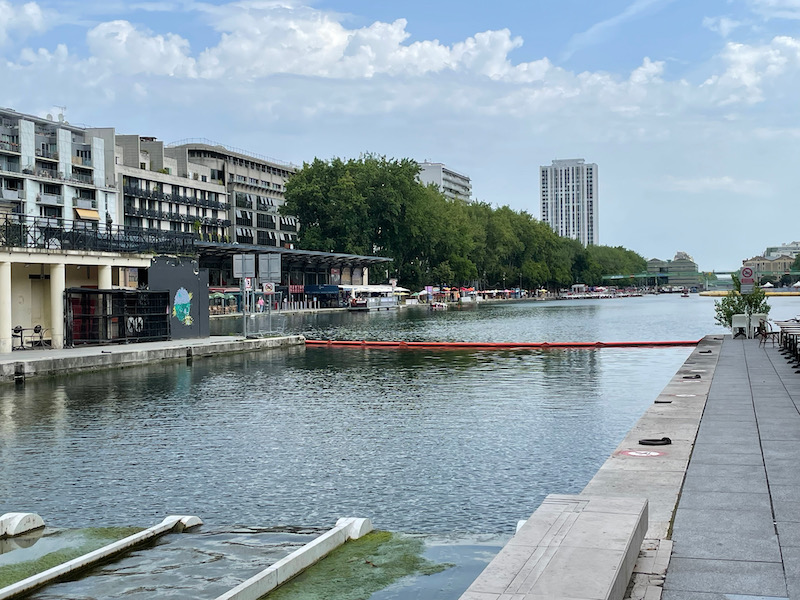
We wandered around a bit, had lunch in another fan zone while watching some of the events, then down to the Saint-Ambroise church. The first chapel built here was in 1659 by the nuns of the convent of the Annonciades of Popincourt. Contrary to the classic orientation of churches, this first Saint-Ambroise church, called Notre-Dame de la Procession, was generally oriented north-south. It was destroyed during the construction of the Boulevard du Prince Eugène, now called Boulevard Voltaire, in 1870. The current church was built between 1863 and 1868. Its style is a mixture of neo-Gothic, neo-Romanesque, and neo-Byzantine, which was very fashionable at that time, and is sometimes called the "2nd Empire style". The 2 identical bell towers, at 68 meters tall, are almost the same size as the towers of Notre Dame Cathedral.
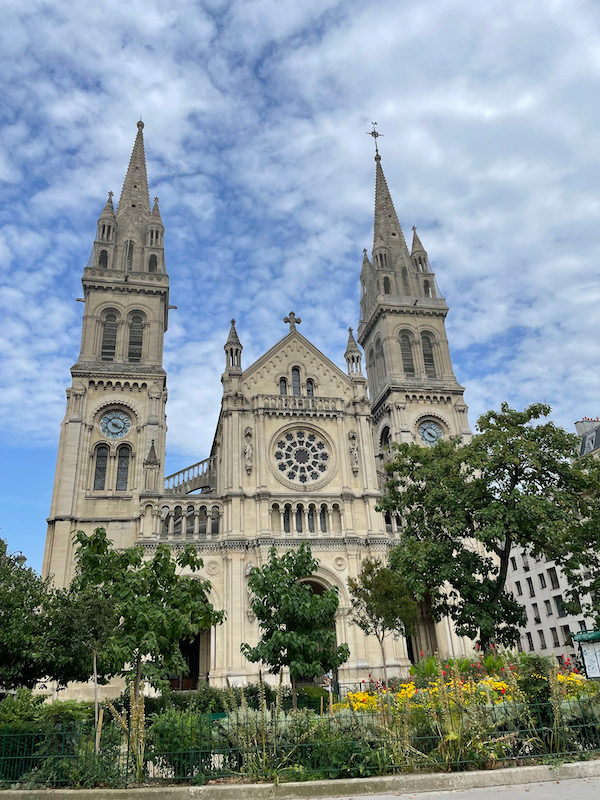
Looking down the nave, you can see the side aisles with rounded arches, but then the very high, ribbed vaults.
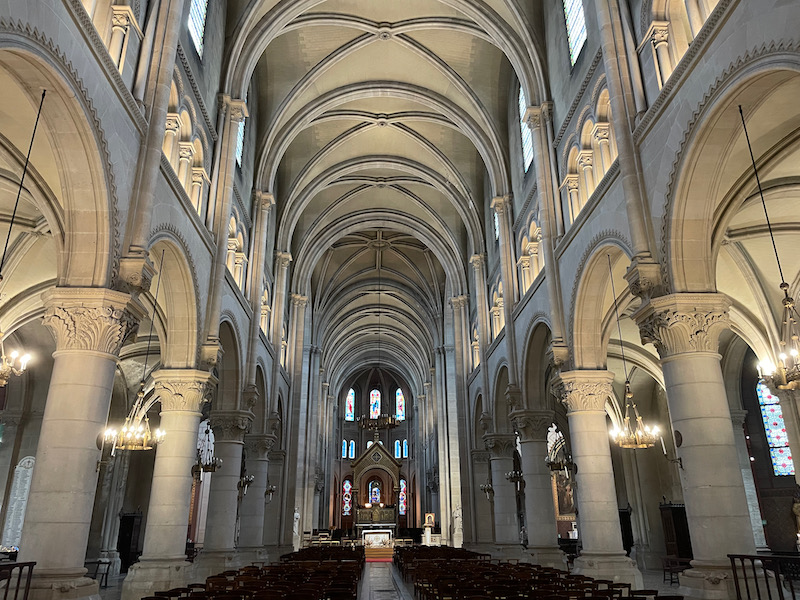
This painting shows the church's patron saint, Saint Ambrose, prohibiting the Emperor Theodosius from entering the church of Milan.
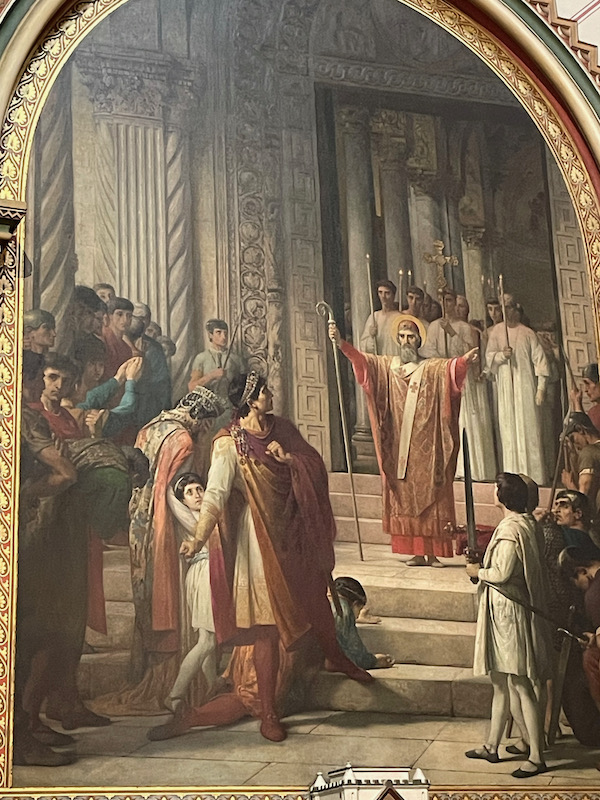
The stained glass windows were made in 1868.
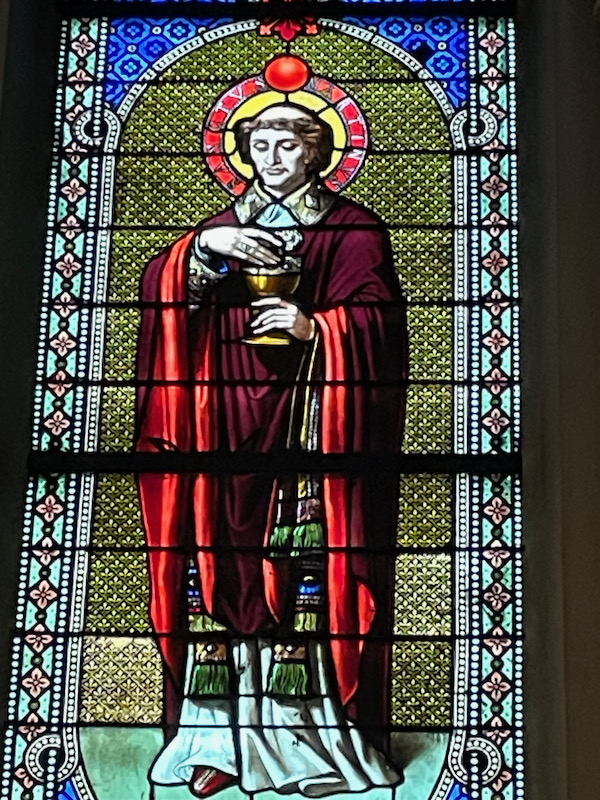
Then the main altar and one of a set of paintings in semicircular recesses of a set of saints.
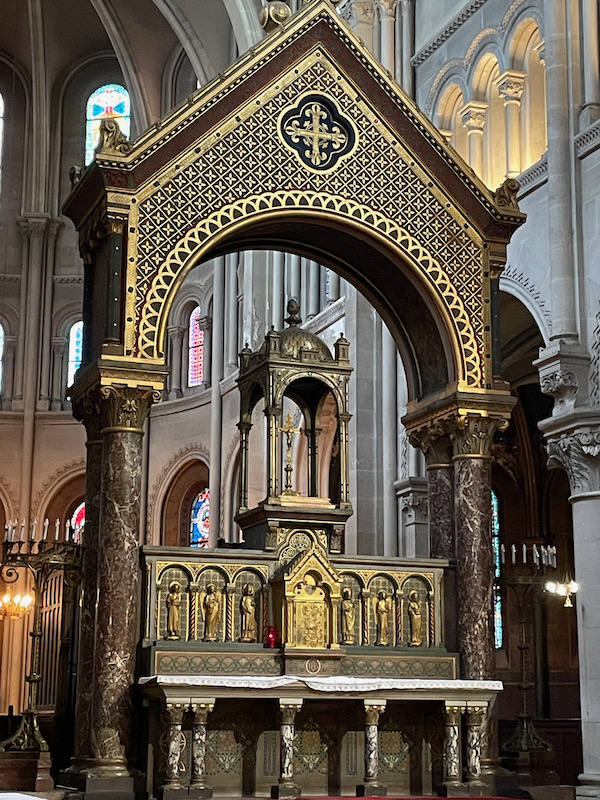
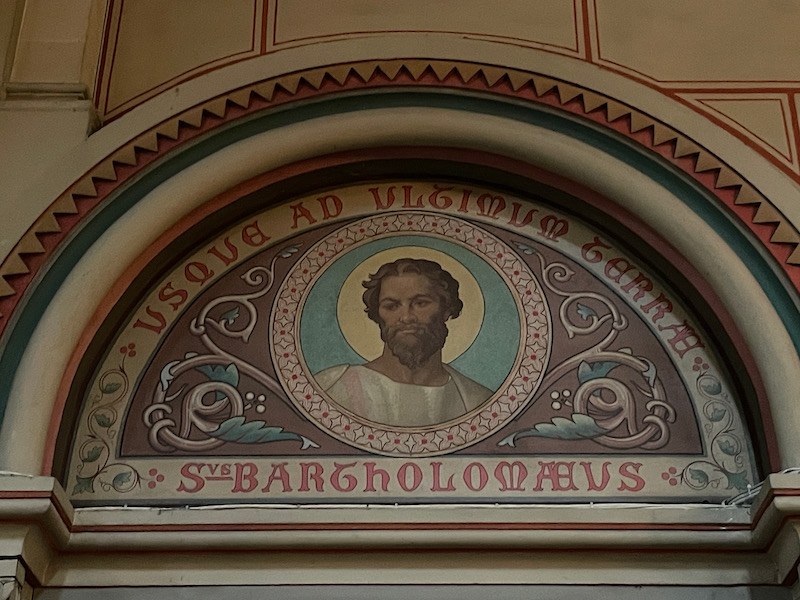
There are a couple chapels like this in the side aisles, with very colorful walls and ceilings, also with ribbed vaults.
